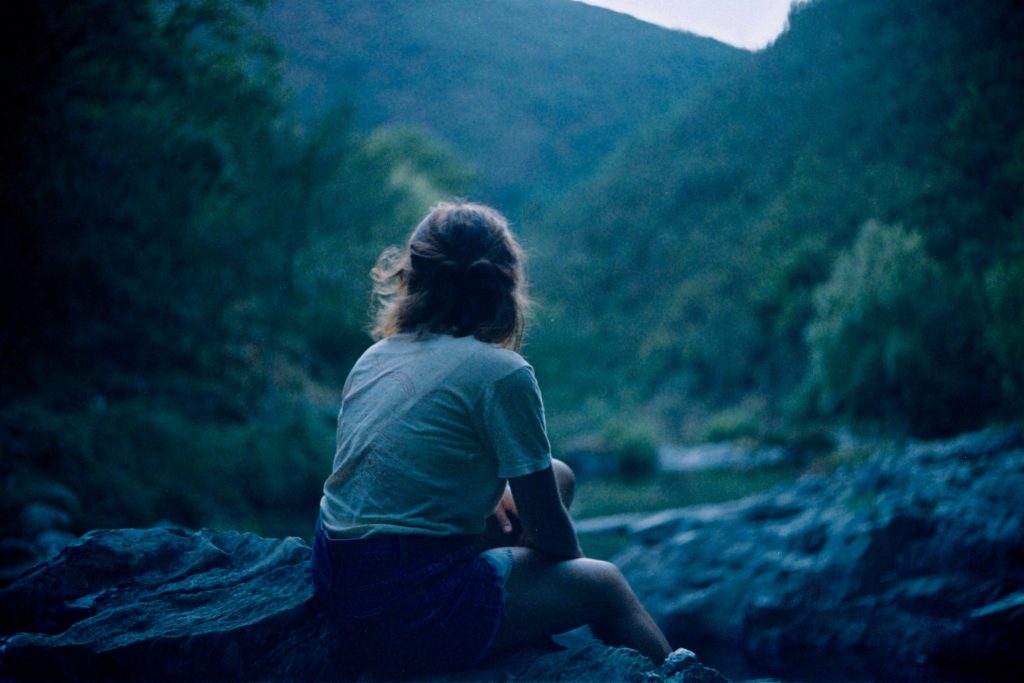
One thing that is really satisfying
about shooting film is how you
don’t really need to edit your photos
– I never do.
Digital photography is great:
With digital, you get to shoot as much as you want to, no limits. You get to see your results directly after you photograph something and immediately upload the photos onto your computer. You can even edit them into the picture you actually had in mind. Isn’t it the best? Well… Not always.
More and more people are starting to shoot on film, and you may ask yourself why. This is what I’m about to explain you.

Canon AE-1 / Kodak Ektar 100
The art of thinking your photos through.
We all know that when we have a digital camera on our hands we tend to have dozens of shots of the same scene. Well, when you’re shooting film you have a limited amount of exposures per roll, so naturally, you won’t be acting similarly. The thing is, this actually comes out as an advantage. What it does is that it makes you plan and compose your shots carefully. You actually end up making sure you are getting the best light and that the composition is exactly what you want – spending some time alone with the scene and the camera. This, let me tell you, can make all the difference, especially when photographing landscapes. It will, at times, give you 36 exposures of pure satisfaction, just because you made sure to prepare what you were doing! Moreover, if you’re on the beginner side of things, this is one of the most successful ways to learn – think your picture through
Film’s incredible aesthetics.
Nowadays, most editing software offers effects that replicate the results you achieve naturally by shooting on film. Grain, for example, is something that can have a wonderful impact on a photograph. This particular element is, however, an original property of film photography which can easily be edited into your digital photos (Lightroom’s Grain tool). What you have in digital photography is not
REAL Grain:
What you have in digital photography is not grain, but noise (or digital grain as some choose to call it). Not wanting to get all technical, but what is originally called grain actually comes from small silver particles that are present in film. The amount of grain depends, on many aspects, mostly the ISO of the chosen film. Nowadays some consider grain to be unwelcome, it can be a wonderful element in a good picture, especially if you’re shooting black and white.

Canon AE-1 / Kodak Portra 400
Choose your film, not your filter.
One thing that is really satisfying about shooting film is how you don’t really need to edit your photos – I never do. Instead, you get to try and play around with different kinds of film! Some will show warmer colors, brighter colors, colder colors.. etc… It all depends on what final result you want. Shopping for the film is basically going to the candy store. Pure fun!

Canon AE-1 / Fuji Superia 200
The beautiful (and affordable!) vintage cameras.
Finally, it is the chance you get to find amazing cameras at the price of nothing! As they are considered « out of date », analog cameras can be found in a variety of places at really satisfying prices (trust me), mostly SLRs. Most of the time they’re also fully manual, which really allows you to be in control of everything and learn how to make the most out of your camera. Plus, they’re incredibly beautiful!
The surprise factor.
The first time you pick up a roll of film you’ve just finished is just like Christmas morning. You want to see it more than anything in the world, and when you actually do, you always have surprises. Whether it is that amazing picture you had already forgotten about or the unexpected light leak that actually fits in perfectly – it’s never boring. In fact, it’s so exciting that some brands are even taking the screens off their newest digital cameras.
Just To Recap:
For those of you who are interested and don’t know where to start, I wanted to leave you with a list of resources and products that I personally use! Now, as I mentioned earlier, one of the benefits of shooting film is how accessible and affordable finding old cameras can be. But you don’t need to go on an antique-store treasure hunt to find what you need, either.
Camera bodies:
- The first image of this post I shot on a Canon AE-1 35mm Film Camera w/ 50mm 1:1.8 Lens
. The AE-1 was first released in 1976. The quote below if from a wonderfully detailed review that I would highly recommend you read if interested in purchasing this camera.
The first thing one notices with the AE-1 is that it’s a gorgeous camera. It’s almost perfect, aesthetically. It’s the quintessential old camera, dripping that vintage style that everyone loves. It’s sober and classy, with purposeful lines and fantastic proportions. Controls are nicely machined with intricate knurled edging, contrasting patches of chrome and black, and deeply engraved, colorful text.
- Next up Is the Pentax K1000 Camera with 50mm (f/2.0) Lens
. The image right about this section was shot on this camera. If you would like a beautifully detailed review of this camera, here it is!
So this is one of those cameras that make you see what film is all about. This bad boy has no bells and whistles about it; it’s all about clean and simple shooting. It does what a camera was made to do and doesn’t waste anyone’s time and mental space with extra special features, or even unnecessary ordinary ones at that. For this reason, the Pentax K1000 is a great option for beginners wanting to buy a first 35mm film camera.
Film Rolls:
- As shown in the first image of this postKodak Ektar 100 Professional ISO 100, 35mm, 36 Exposures, Color Negative Film
- As shown in image number two, Kodak Portra 400 Professional ISO 400, 35mm, 36 Exposures, Color Negative Film
- As shown in the final two imagesFujifilm Fujicolor 200 Speed 24 Exposure 35mm Film – 4 Pack (Discontinued by Manufacturer)
-World’s finest grain high-speed color negative film, Ideal for scanning with extraordinary enlargement capability.
-Beautiful, natural skin tones and superb color reproduction.
-Optimized sharpness and distinct edges with fine detail.
There is so much to benefit by giving this method of photography a try! I really hope you have the chance to experience it and that this post helped convince you!
In the end, there are advantages to both types of photography. Shooting film was my personal choice and honestly, it’s pretty cool.
Come on, give it a try?

